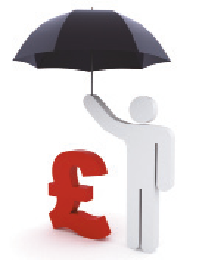
Over the next weeks we’ll be looking at how expensive markets were around previous crashes (1987, 1999, 2008), a cautious portfolio for investors that want a bolt-hole and why we’re in the midst of a dangerous investment bubble. But first, a refresher on what twists and turns you can (and should) expect.
In spite of the fact that the current chairman of the US Federal Reserve - Janet Yellen - recently said that she didn’t expect to see another financial crisis in her lifetime and that share prices: "look high but there's no certainty about that" we think there are definitely reasons to be concerned.
Many investors have bought into the belief that central banks will keep propping up stock markets and so prices of stocks (and other assets) will keep rising. When expensive markets get more expensive and prices keep going up it’s easy for investors to get complacent. Memories of the last correction fade and the belief that “this time is different” takes hold.
As it’s been a while since we had a decent downturn (2008-9), you might have forgotten what one looks like. Here’s a refresher.
Based on over 100 years of data, if you stayed invested in the UK market for 18 years there was a 90% likelihood of a better return than leaving your money on deposit.
Nonetheless, over that 18 years the road has many twists and turns – this is volatility. This is how we define those “twists and turns”:
- A correction is in the range of 10-20%. It will generate twitchy headlines. Be patient and it will go as soon as it arrived.
- A bear market. Falls in the range of 20-50%. Yes, it can be scary. Three since 2000 but patience and steady nerves or a good adviser got you through them.
- A secular bear market, a multi-year downturn. You should expect falls in excess of 50%.
You can factor in occasional years of weakness such as the first two categories. But very occasionally it can get somewhat worse, often with irrational prices.
Over the next few weeks we’ll be looking at that in more detail.
ACTION FOR INVESTORS
- If you don’t have an investment plan in place the best time to set one up is when markets are calm
- Don’t be an inert investor…
- …you’ll be lucky to achieve even mediocre returns
FURTHER READING